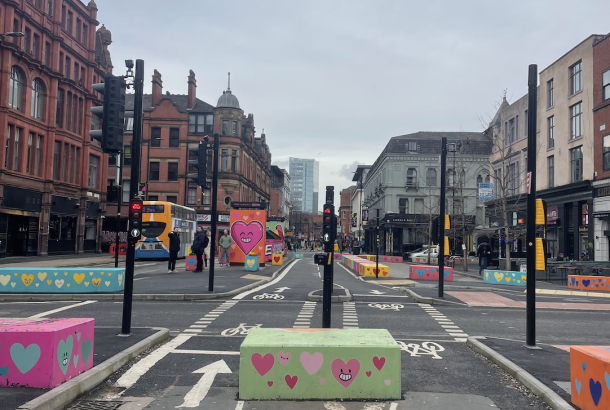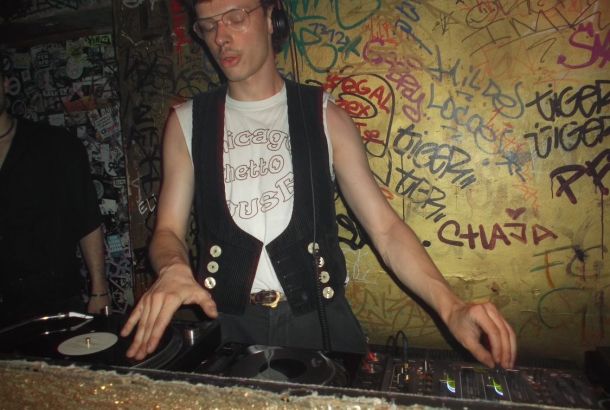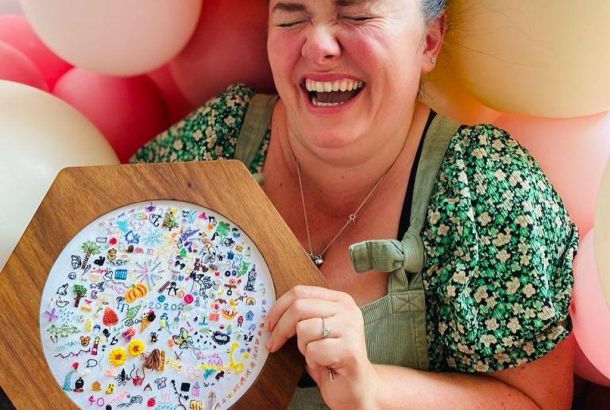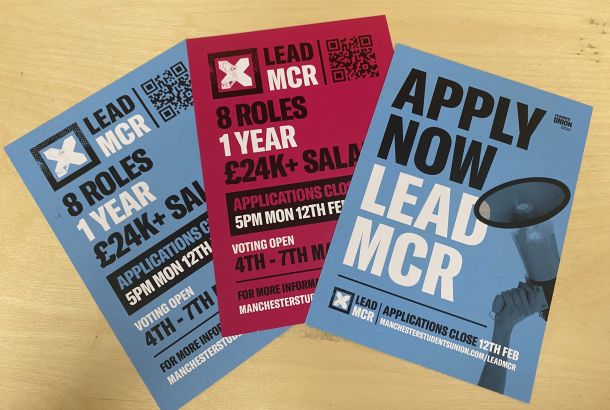Should museums repatriate stolen artefacts? In conversation with Dr. Njabulo Chipangura
By Erin Osman

Closed during the Covid pandemic and then for a whopping £15 million redevelopment project named hello future, the Manchester Museum finally reopened its doors to the public in February 2023.
One of the UK’s largest university museums, Manchester is home to around 4.5 million objects from across the world, including collections such as Egypt and Sudan, South Asia, China, Earth Sciences, Anthropology, Zoology, Botany, Vivarium, and Archaeology, among many others.
While the hello future redevelopment project did invest partly in the improvement of the actual building and collection of objects, its scope of improvement mainly focused on a particular civic mission: that is, ensuring that its galleries and displays were ethically co-curated and designed to include new and diverse perspectives. Its new mission centring around three core values: care, inclusivity, and imagination.
While it is no secret that museums are not, and have never been, objective bearers of universal truths (this is especially true when it comes to collections of empire), it certainly feels as if Manchester is at the forefront of the telling of a different story. One that centres the perspectives of those actual communities whose histories are being told, rather than the opposite, the voice of the coloniser.
I caught up with Dr. Njabulo Chipangura, in an effort to learn more about Manchester Museum’s redevelopment project, and to ask about his specific role as Curator of Living Cultures at the museum.
The evolution of the museum: Curator of Living Cultures
Firstly, I asked Dr. Njabulo Chipangura about his job. An interesting – if ambiguous – title, most people might not initially associate museums with actual, living cultures. So, what does his role actually include?
“As a curator, I am responsible for the care of more than 35,000 anthropological objects from all over different parts of the world, mostly former British colonies: Africa, Americas, Australia, Asia, and collections of ancestors’ human remains. So, my day-to-day job revolves around thinking about these objects, not just as objects that were collected from colonised societies, but as living cultures. They represent living cultural practices from where they were collected.”
Not only do objects represent living cultural practices from the times in which they were collected, Chipangura tells me, but they also represent the living cultures of people today. In the South Asia gallery, some of the displays are very modern. One exhibit, for instance, centres around the NHS, telling the story of the role of many South Asians who worked, and still do, within the organisation – including those who lost their lives to Covid whilst carrying out their work.
The telling of more modern stories like these can help us understand older ones, such as the history of patterns of South Asian migration. History, Chipangura is keen to express, is not only to be found in ancient artefacts.
“Museums have been complicit in some of the worst collecting practices: looting, appropriation, dislocation, and colonial violence are visible in the ways in which objects were collected and imprisoned in the museum.” In the evolution of the modern museum, and in the re-thinking of colonial-knowledge production, Chipangura tells me that it is essential to “collaborate with source communities and diaspora communities in doing provenance research” on these looted artefacts.
The voices and participation of source and diaspora communities are at the core of Dr. Njabulo Chipangura’s role as Curator of Living Cultures, in which he hopes to “open up different ways of knowing, benchmarked on indigenous perspectives.”
The question of repatriation
Repatriation – or rematriation – is a highly polemicised de-colonial movement in which artefacts and cultural objects are returned to their country or community of origin. In the past few years, museums across the country have begun these processes of repatriation, processes which, in reality, can be very complex.
Chipangura tells me that repatriation is “very politically charged.” There is a lot of bureaucracy involved. Discourses about repatriation are often used as ammunition in political debate. In 2020, for example, the then Secretary of State for Culture, Media and Sport, Oliver Dowden, threatened funding cuts to cultural institutions that were in the process of various repatriations. A scary threat: especially if your museum relies heavily on government funding.
Being a university museum, Chipangura explains that “[Manchester Museum] can be a bit more proactive in how [they] are engaging with the repatriation question, compared to other museums which are still very much binded by national legislation.” In September 2023, the museum was successful in a critical return of 174 cultural objects to the Anindilyakwa people of Groote Eylandt; Aboriginal Australian people living in and around the Northern Territory of Australia.
Regional museums, or museums like Manchester which are primarily funded by universities, are far more likely to be able to return artefacts to their countries of origin. But, as Dr. Njabulo Chipangura tells me, the process of repatriation “is not a one-size-fits-all.”
One of the fundamental issues of repatriation is that “sometimes, often, there is no proactive claim from [indigenous] communities.” This struck me as unusual, but Chipangura explained that this is because “[indigenous communities] don’t know, they don’t know what [museums] hold.”
“So, we have to be proactively engaging. Telling them, recounting, disclosing that we have these cultural objects. […] So this is the reason why most museums still hold thousands of these objects, because there is no real accountability. There’s no truth-telling, there’s no disclosure.”
On the value of repatriation, Chipangura is clear: “Repatriation will facilitate the kind of harvesting of new narratives from communities, because they will be able to tell you many more stories.”
“Repatriations can be a stepping stone for building relationships with communities, right? Because you gain more from repatriation, and you gain the respect of those communities. So this is where the crux of the matter is: repatriations are not a form of loss.”
Can colonial artefacts be displayed ethically?
Museums are inherently colonial centres. Many of them would not exist had empires never occurred. Many critics argue that it is impossible, therefore, to de-colonise the museum: displaying items stolen from the colonies of empires is simply a reproduction of colonial violence.
But, as is clear, particularly in Manchester’s South Asia gallery, the museum is working to create exhibitions that are ethical, caring, inclusive, and imaginative – incorporating the voices of source and diaspora communities to tell stories of empire.
I asked Dr. Njabulo Chipangura what he thought about this: whether he thinks there is a way to display colonial items (items that were typically ‘collected’ in very violent ways) ethically.
Chipangura began, “I think the starting point is just acknowledging. Telling the truth around how these objects were looted or collected. That’s where you need to start telling the story.”
“Then,” he continued, “you open up the conversation to communities. Because I mean, essentially, if you want to display those cultural objects that were unethically acquired, you need to start by getting permission from the community. You need to ask them.”
“Then, we are telling a story of acknowledging that colonial violence was responsible for these collections. And we are sorry. We’re sorry.”
Chipangura spoke about the importance of not glorifying such objects. “This is what most museums were doing in the past; the glorification of colonial conquests.”
“But now we are talking about it inclusively. Allowing those who suffered from colonialism to be at the forefront of the telling of their own story.”
“We will never erase the colonial question,” Chipangura tells me. “The empire happened, we can’t pretend it didn’t. But what is essential is how you tell it.”
Democratising the museum
Not only did the hello future redevelopment project look at displays and collections, it also aimed to improve the building itself. Chipangura spoke to me about this process, describing the many structural, democratising improvements made within the museum.
“In the building itself, we are building more spaces, amazing spaces: a picnic area, a prayer room, gender-accessible toilets. […] We are not just thinking about how the museum as a space where we keep objects. We’re thinking about inclusivity in everything.”
“We know that museums are for objects, but they’re also for people. So we’re doing a lot of things to make this space more democratic, more accessible. We have a therapy dog called Murray. This is how a museum can be a space of social action, an agent of social change.”
When I visited the museum on Monday, the only day of the week that it is closed to the general public, they were showing multiple school groups around – both at university and primary school level.
“Anyone in the city is free to come to any of our exhibitions. They are all free. That’s part of being inclusive as well – we don’t need to charge anybody anything.”
Manchester Museum is also the world’s first Carbon Literate museum, meaning that the majority of staff have completed Carbon Literacy training, and the institution itself has written Carbon Literacy into its review and performance processes.
Golden Mummies of Egypt display
The last question I had for Dr. Njabulo Chipangura was about the museum’s current temporary display, the Golden Mummies of Egypt, curated by Dr Campbell Price. The exhibition offers unparalleled access to the museum’s Egypt and Sudan collections, featuring more than 100 objects, and, controversially, the exposed body of a mummified person.
I asked Chipangura about the ethics of such a display, about what it means to display an un-consenting mummified body in such an exposing way.
He told me that the museum is currently in conversations regarding the human remains. “Asking what human remains actually mean for Manchester.” He told me, “We need to recognise that they are not just human remains, but they are ancestors of living peoples.”
“We are having conversations actively in regards to the mummies… about how we can ethically display them.” While a dehumanising gaze definitely exists, Chipangura tells me that “we make sure that beneath this gaze, beneath the display, there are the stories of real people: the ritual practices of burials, the ancient burial practices. Story first, then the object.”
He described how moving forward, “[the museum is] hoping to collaborate with some of the communities whose ancestors we hold here. We’re hoping to repatriate, even rebury. I think we must let them rest in peace.”
For a long time now, it feels as if museums have become the kinds of places where you go to stand and look. They are places where you will probably see some really shocking things, but the historical reality of these things is not properly communicated.
Manchester Museum’s redevelopment project seems to have tried – and is trying – to work against this, bringing the humanity aspect back into its collections and galleries.
The institution might still have some work to do, yet, curators like Dr. Njabulo Chipangura provide hope for the future of museums everywhere – transforming the museum into a space for everyone.







